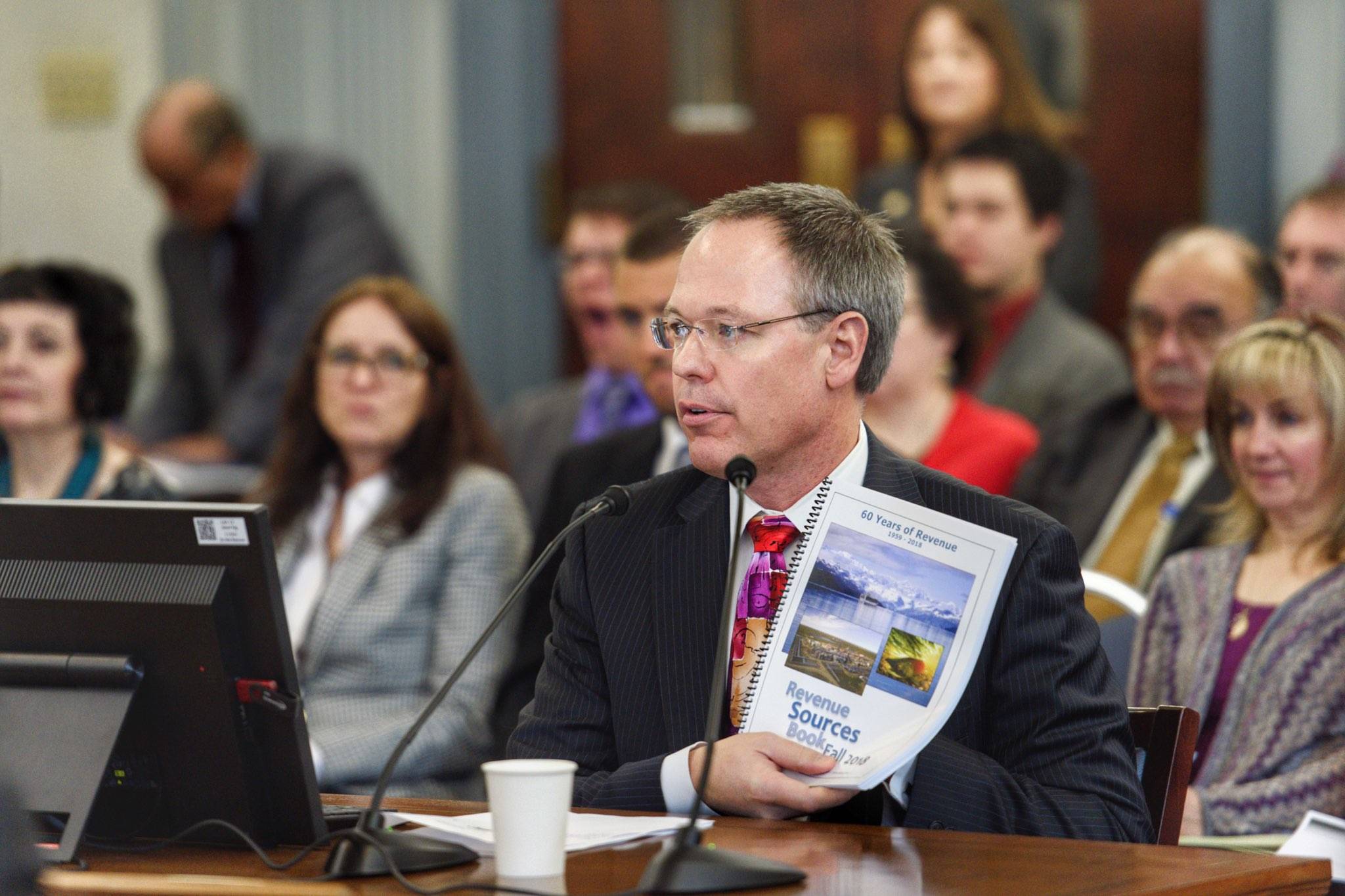New Alaska Gov. Mike Dunleavy’s administration is taking a more conservative approach to oil revenue forecasting to help avoid the creation of an oversized budget.
New Department of Revenue Commissioner Bruce Tangeman delivered a presentation on revenue forecasting to the Senate Finance Committee on Wednesday morning.
The presentation highlighted the volatility in the oil market. At the beginning of October, the price of oil peaked at more than $75 per barrel, a four-year high. Tangeman said this was followed by a “pretty large gyrations” in the market through the rest of October and November.
[Dunleavy unveils plan for PFD back payments]
Since then the market has calmed, and as of Wednesday, the price of Brent Crude oil was $61.33 per barrel. Brent Crude is an oil standard that is considered intermediate in quality.
Tangeman said these “wild swings” are why the Dunleavy administration is now using an oil revenue forecasting model developed in the spring, which places oil prices around $64 and $65 a barrel for the next few years.
The previous model placed oil at $75 per barrel in the current year with a slow trickle downward that leveled off at $70 a barrel in 2021.
A more conservative forecast will make for conservative budgeting moving forward. In fact, oil revenues for the general fund are expected to dip in the coming fiscal year from $2.211 billion in the current year, to $1.688 billion or about $523 million or 23.6 percent. Oil revenues totaled $1.941 billion in fiscal 2018.
“It does reflect how important it is to use a more conservative number,” Tangeman said of the recent upheaval in the oil market, in a phone interview. “If the oil price does go up, great.”
[Infographics: Alaska’s 2019 Budget]
The ever changing economy that relies heavily on oil and other natural resource production in Alaska also highlights the need to get spending under control, as far as the Dunleavy administration is concerned.
“We feel we need to get our house in order,” Tangeman said in the phone interview. “First we need to drive down the cost of government.”
“His overall take is how big a government do we need regardless of the revenues,” Tangeman added.
Dunleavy’s amended budget is expected to be unveiled by the 30th day of the session, so it could be released by mid-February.
Capital expenditures on the North Slope
Tangeman’s presentation showed Capital investments by oil and gas companies are forecasted to increase in coming years, from $1.446 billion in fiscal 2018 to about $3.122 billion in 2021. This is due to new oil developments, the Pikka and Willow oil fields, that are expected that are expected to start pumping oil down the pipeline in the not too distant future.
Sen. Natasha Von Imhof found this encouraging.
“Very encouraging news to see new investment in Alaska,” the Anchorage Republican, who co-chairs the Finance Committee, told the Empire. “… This increase in investment, I would suspect, is going to be yielding new jobs.”
Finance Committee members
Co-chair Sen. Bert Stedman, R-Sitka, said this finance committee is larger than those of the last decade to address the complexity of the budget. Other members include co-chair Sens. Natasha Von Imhof, Click Bishop, Lyman Hoffman, Mike Shower, David Wilson, Peter Micciche, Donny Olson and Bill Wielechowski.
Contact reporter Kevin Baird at 523-2258.

